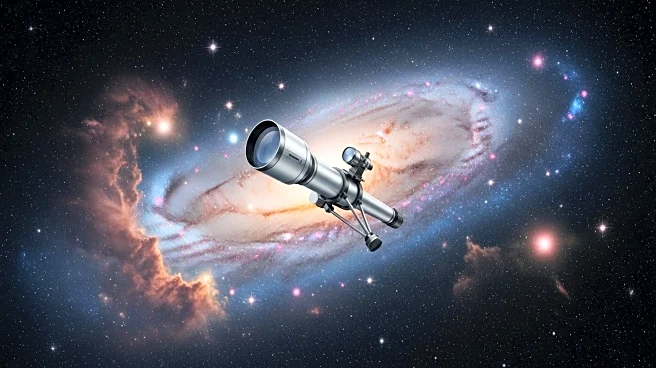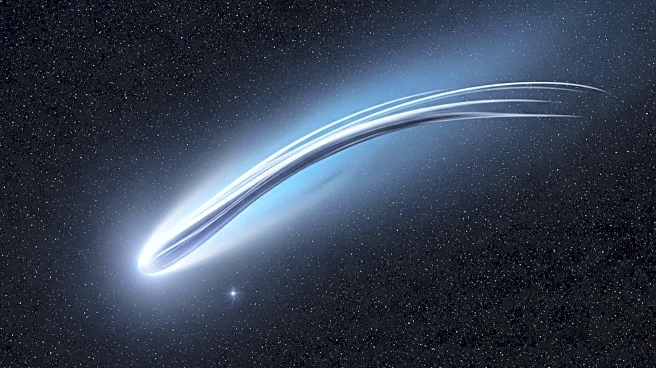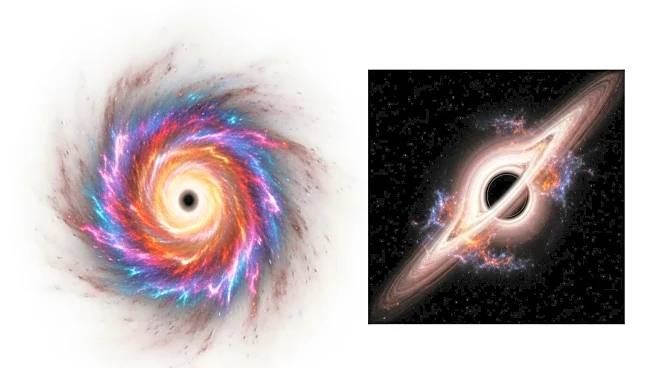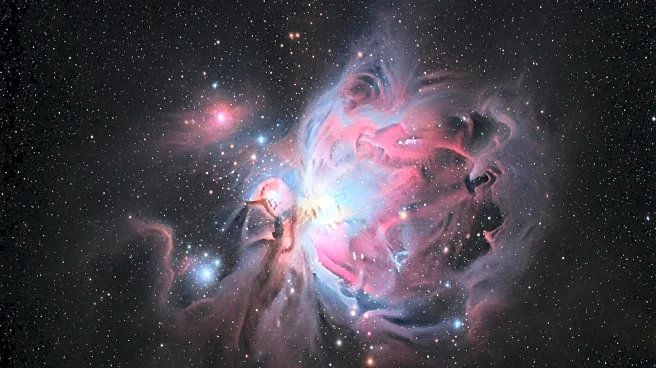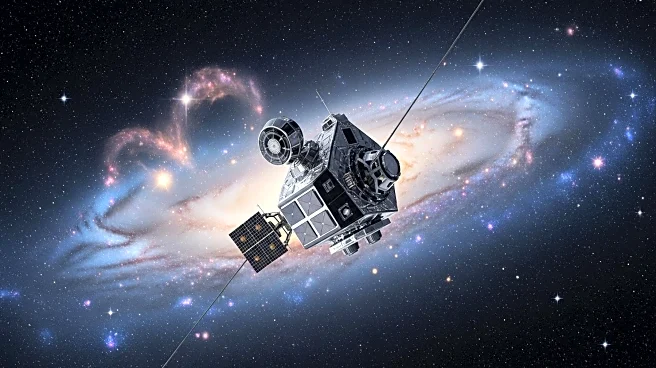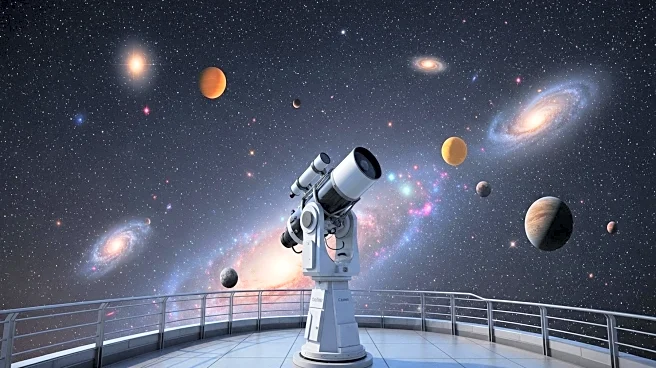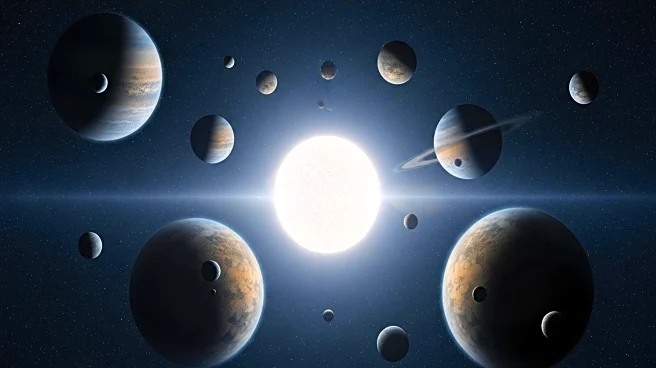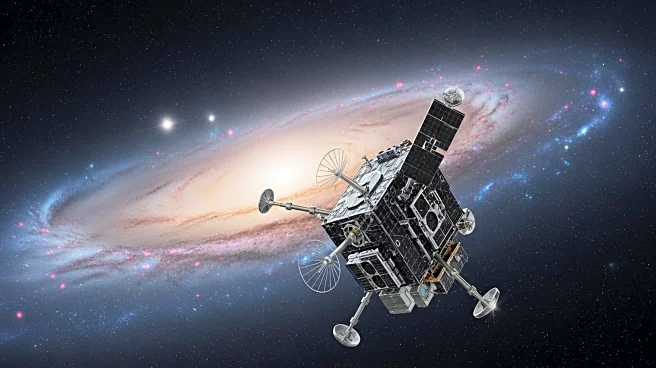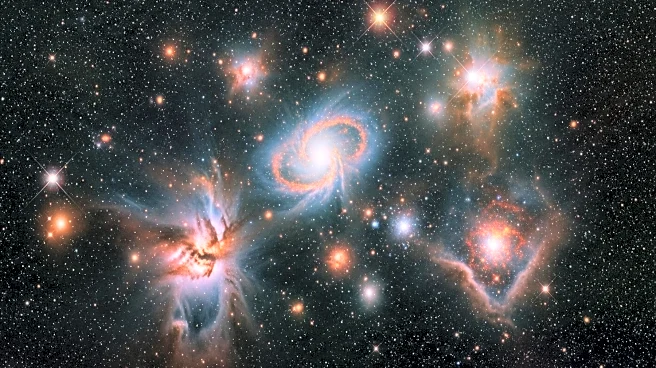What's Happening?
The XRISM spacecraft, a collaboration between NASA and JAXA, has observed powerful cosmic winds emanating from a neutron star, providing new insights into the physics of accretion disks around extreme celestial bodies. The study found significant differences between the winds from neutron stars and those from supermassive black holes, suggesting variations in the underlying mechanisms. These findings could reshape our understanding of how matter and energy interact around these objects, influencing their cosmic surroundings.
Why It's Important?
The discovery of differences in cosmic winds from neutron stars and supermassive black holes could have profound implications for astrophysics. Understanding these dynamics is crucial for comprehending how energy is distributed in the universe and how galaxies evolve. The research also highlights the potential of XRISM's advanced capabilities to provide unprecedented details about the interactions between radiation and matter, paving the way for future space telescopes and scientific advancements.
What's Next?
The findings from XRISM may guide the development of future space missions, such as the ESA's NewAthena, set to launch in 2037. Researchers will likely continue to explore the differences in cosmic winds and their implications for galaxy formation and evolution. Further studies could focus on the temperature variations between accretion disks and their impact on wind speed and density, enhancing our understanding of the universe's most extreme environments.


